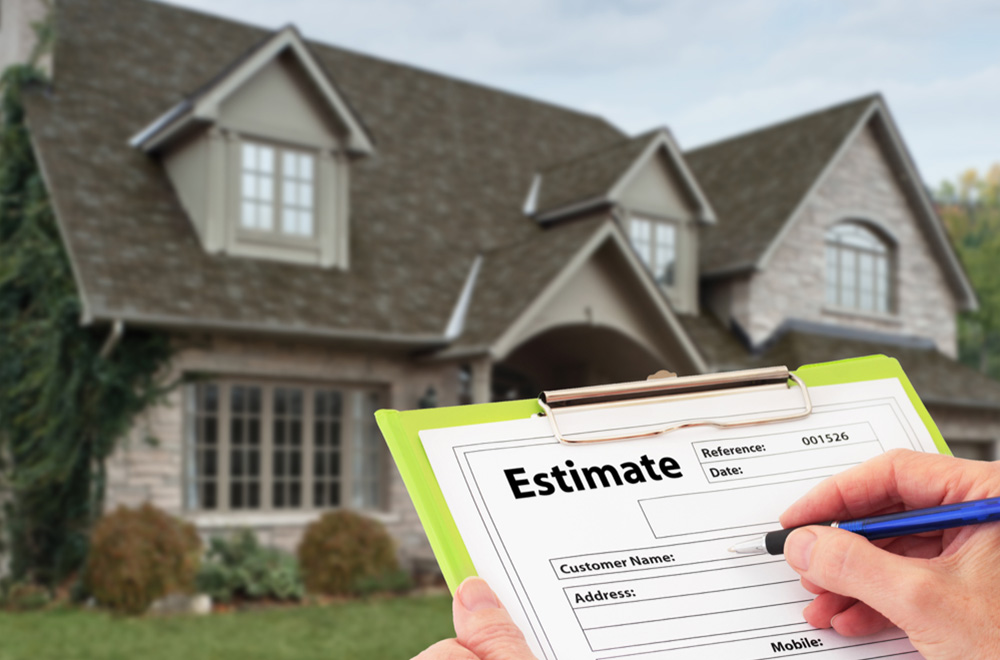
What Are Roof Estimates?
Roof estimating is the process of calculating the costs, materials, and labor required for a roofing project. Accurate roof estimates are crucial for homeowners, contractors, and builders to ensure proper budgeting and project planning. This process helps in avoiding unexpected expenses, ensuring the project stays within financial constraints. Understanding the elements of roof estimating can lead to more informed decisions and smoother project execution.
Importance of Roof Estimates
Roof estimates are essential for effective budgeting and planning. They provide a clear picture of the total costs involved, enabling homeowners and contractors to make informed decisions. Accurate estimates prevent cost overruns and financial surprises, ensuring the project remains financially viable. They also help in comparing bids from different contractors, ensuring competitive pricing and quality service.
Components of a Roof Estimate
A comprehensive roof estimate includes material costs, labor costs, old roofing removal, permits, and additional expenses like disposal fees. Each component must be detailed to provide a complete financial picture. Accurate itemization ensures transparency and helps in anticipating all potential costs, leading to better budget management and financial planning. By breaking down each cost component, homeowners and contractors can better understand the financial requirements and avoid surprises during the project.
How to Measure a Roof for Estimating
Accurate roof measurement involves calculating the roof’s area, slope, and complexity. Tools like roofing calculators, tapes, and specialized software can aid in precise measurements. Accurate measurements are crucial for determining the amount of materials needed and the overall project cost, ensuring the estimate is as accurate as possible. Proper measurement techniques help prevent material shortages or overages, contributing to a more efficient and cost-effective project.
Choosing the Right Materials
Selecting appropriate roofing materials significantly impacts the cost, durability, and appearance of the roof. Common materials include asphalt shingles, metal, tile, and wood shakes. Each material has different price points, lifespan, and aesthetic qualities. Making informed choices about materials is essential for aligning with budget constraints and desired outcomes.Choosing the right materials ensures the roof meets aesthetic preferences, performs well under local weather conditions, and stays within budget.
Labor Costs in Roof Estimates
Labor costs can vary based on roof complexity, local wage rates, and the experience of the roofing crew. Including detailed labor costs in the estimate ensures transparency and allows for a better comparison of different contractors’ bids. Accurate labor cost estimation helps in managing project timelines and financial expectations. Clear labor cost breakdowns prevent misunderstandings and help ensure that the work is completed on schedule and within budget.
Permits and Regulations
Obtaining necessary permits and adhering to local building regulations are critical for roofing projects. These requirements can add to the overall cost and must be factored into the roof estimate. Compliance with local codes ensures the project meets safety and legal standards, avoiding potential fines and project delays. Understanding permit costs and regulatory requirements helps in creating a realistic and compliant project plan.
Common Mistakes in Roof Estimating
Common mistakes in roof estimating include underestimating material wastage, ignoring labor variations, and not accounting for unforeseen expenses. Avoiding these mistakes ensures a more accurate and reliable estimate. Thorough planning, double-checking measurements, and anticipating potential issues contribute to more precise estimates. Being aware of these common pitfalls helps in creating a comprehensive and realistic budget, reducing the risk of unexpected costs during the project.
Tools and Software for Roof Estimating
Various tools and software assist in roof estimating, streamlining the process and providing more accurate measurements. Popular options include roofing calculators, estimation software, and 3D modeling tools. These tools help generate detailed reports, making the estimating process more efficient and reliable.
Tips for Accurate Roof Estimates
To ensure accuracy in roof estimates, double-check measurements, use reliable software, and consult with experienced professionals. Detailed documentation and regular updates throughout the project contribute to maintaining an accurate estimate. These practices help in avoiding errors and ensuring the project’s financial stability.
The Role of Weather and Seasonal Factors
Weather and seasonal factors can significantly impact roofing projects. Estimating during favorable weather conditions helps avoid delays and additional costs associated with adverse weather. Considering seasonal variations in labor availability and material prices can also lead to more accurate estimates.
Comparing Multiple Estimates
Obtaining multiple roof estimates from different contractors allows for a comprehensive comparison of costs, materials, and services. Comparing these estimates ensures competitive pricing and helps in choosing the best value for the project. It also highlights any discrepancies or omissions in the estimates.
Negotiating with Contractors
Negotiating with contractors based on the roof estimate can lead to cost savings and better terms. Being well-informed about the estimate details empowers homeowners to discuss and agree on fair pricing, scope of work, and timelines. Effective negotiation ensures a mutually beneficial agreement.
Contingency Planning in Roof Estimates
Including a contingency plan in roof estimates accounts for unexpected issues and additional costs that may arise during the project. A contingency fund, typically 10-15% of the total estimate, ensures that unforeseen problems do not derail the project. This planning provides financial security and flexibility.
Conclusion
Roof estimating is vital for successful roofing projects within budget. By understanding the components, measuring accurately, choosing the right materials, and using proper tools, homeowners and contractors can achieve reliable roof estimates. This comprehensive approach helps avoid surprises and ensures a smooth, financially sound roofing project.


